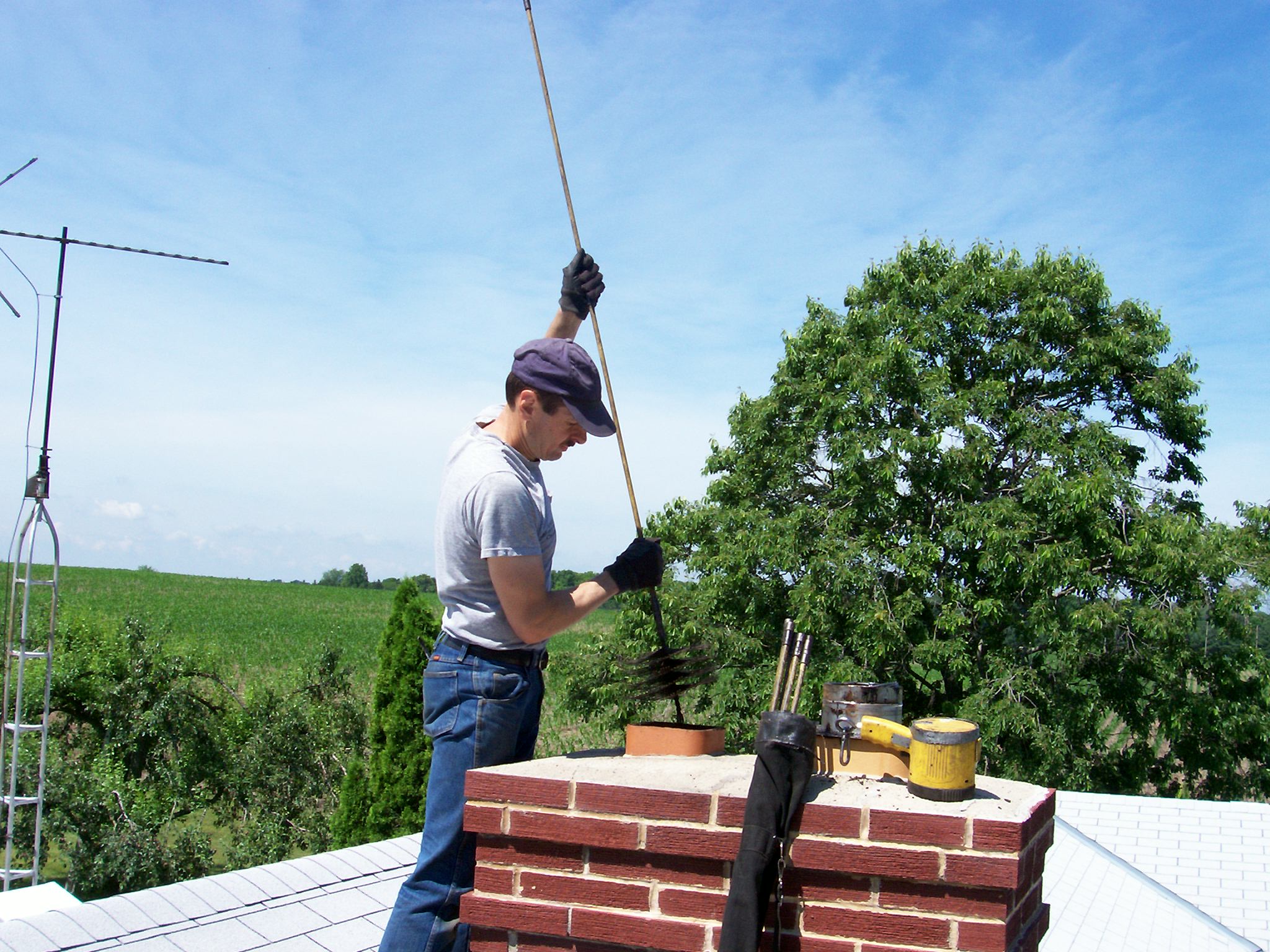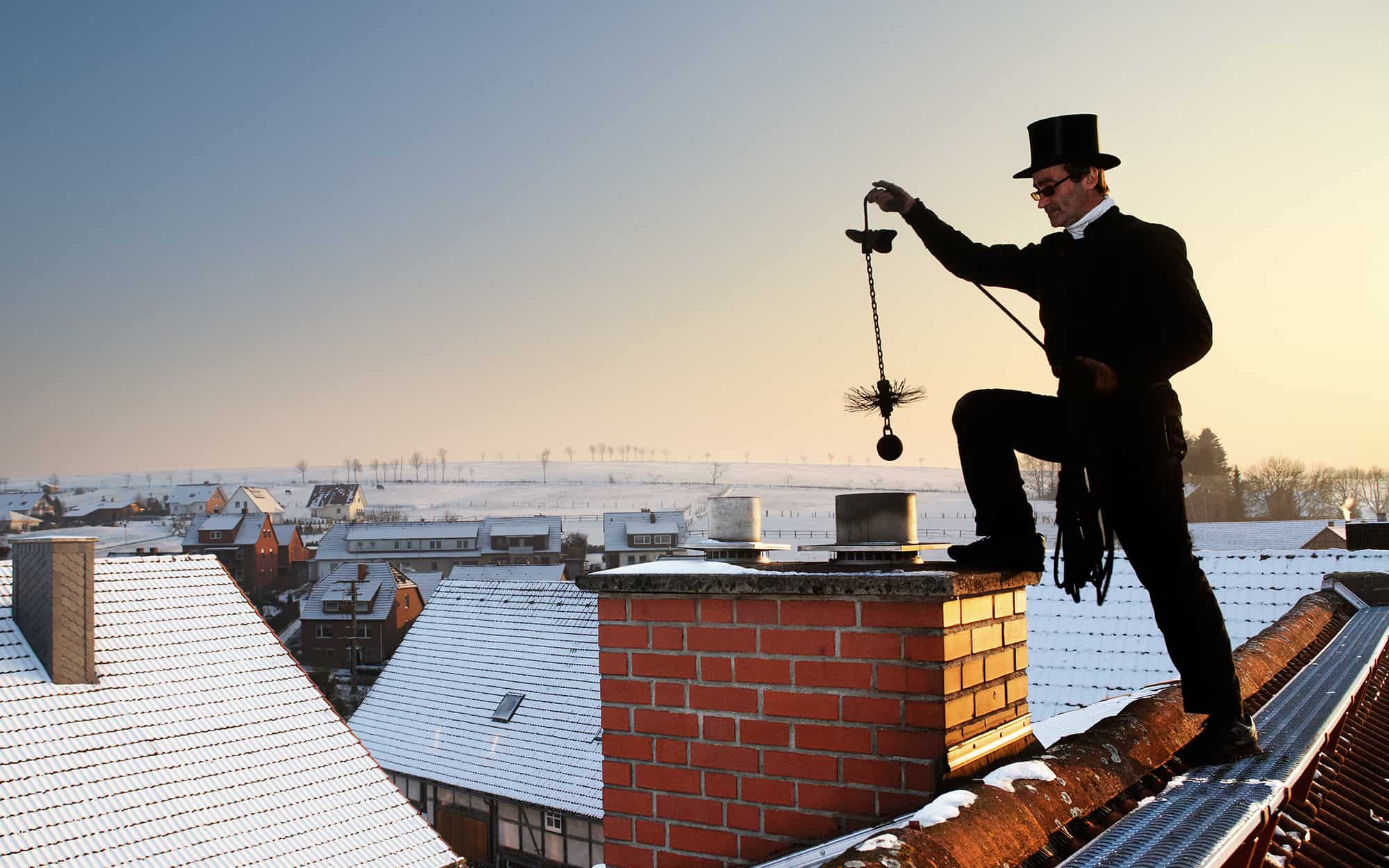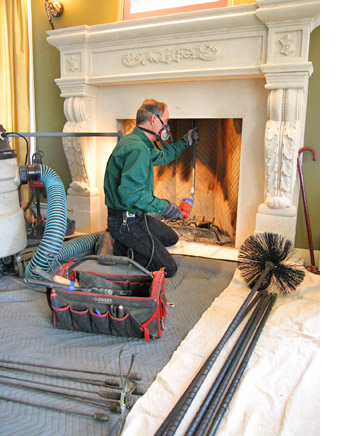Your Hearth's Friend: Chimney Clean San Jose for a Comfy and Safe Home
Your Hearth's Friend: Chimney Clean San Jose for a Comfy and Safe Home
Blog Article
Smokeshaft Cleaning: A Step-by-Step Guide to Preserving a Healthy And Balanced Fire Place
Maintaining a healthy and balanced fire place is vital for the safety and efficiency of your home. Routine chimney cleansing is a crucial part of this upkeep regimen. In this detailed overview, we will certainly provide you with comprehensive guidelines on just how to effectively clean your smokeshaft, making sure that it operates ideally and reduces the risk of fire hazards. By following these standards, you will discover exactly how to collect the required tools, execute an aesthetic assessment, clear particles and build-up, move the chimney, and finish the final steps for ongoing maintenance. With a professional method and attention to detail, you can confidently deal with your fire place and appreciate its heat and comfort for several years to come.
Collecting the Required Tools
To begin the process of smokeshaft cleaning, the first action is to gather all the necessary devices. Having the right tools at hand makes certain a reliable and risk-free cleansing procedure. The vital tools for chimney cleansing include a smokeshaft brush, a ladder, decrease cloths or plastic sheets, a flashlight, handwear covers, and a dirt mask.
The smokeshaft brush is the primary device used to get rid of soot and creosote build-up from the flue. It is important to choose a brush that matches the dimension and shape of your smokeshaft. In addition, a strong ladder is required to access the smokeshaft safely. See to it the ladder is stable and put on a flat surface area.
A flashlight is crucial for examining the chimney's inside for any kind of indicators of damages or obstructions. Gloves are necessary to safeguard your hands from residue and various other unsafe substances, while a dust mask helps protect against the inhalation of debris.
Carrying Out a Visual Assessment

Utilizing a flashlight, carefully analyze the indoor walls of the smokeshaft for any type of indicators of damages, such as cracks, loose bricks, or mortar wear and tear. These concerns can endanger the smokeshaft's structural integrity and posture a major safety threat. Additionally, look for any indicators of water damages, such as staining or efflorescence, as this can show a leaking smokeshaft cap or flashing.
Following, examine the chimney flue for any type of blockages. Seek the visibility of nesting products, leaves, or particles that might have accumulated in time (Chimney Sweep San Jose). These obstructions can restrict airflow, increase the risk of carbon monoxide gas buildup, and prevent the smokeshaft's capability to successfully air vent smoke
Throughout the visual assessment, pay close focus to the smokeshaft crown, which is the top surface that protects the smokeshaft from wetness. Search for fractures or missing items in the crown, as these can permit water to go into the chimney and cause significant damages.
Clearing Up Debris and Build-up
After finishing the aesthetic examination, the following step in chimney cleansing includes clearing debris and build-up to ensure the proper performance of the fireplace. Over time, debris such as leaves, branches, and animal nests can accumulate in the smokeshaft, obstructing the circulation of air and triggering prospective fire hazards. In addition, the accumulation of creosote, a tar-like substance, is an usual problem in smokeshafts. Creosote is formed when timber or fossil gas are shed, and if not eliminated routinely, it can cause chimney fires.
To get rid of debris and build-up, it is very important to that site use the right tools and strategies. A chimney brush, particularly made for this purpose, is utilized to get rid of loose debris and creosote from the smokeshaft wall surfaces. It is necessary to select a brush that matches the size of your chimney to make sure reliable cleaning. Before beginning the cleansing procedure, make certain to cover the fireplace open up to stop particles from coming under the room.
To begin, insert the brush into the chimney and relocate it up and down, rubbing the wall surfaces to displace any kind of particles or creosote. As soon as the cleaning is total, make use of a vacuum cleanser or a smokeshaft brush expansion to eliminate the dislodged debris from the fireplace.

Sweeping the Smokeshaft
The sweeping of the smokeshaft is an essential action in maintaining a healthy fireplace. In time, soot, creosote, and other debris can build up in the chimney, obstructing the circulation of air and possibly creating an unsafe build-up of combustible products. Regular chimney sweeper not just makes sure appropriate ventilation yet additionally protects against the threat of smokeshaft fires.
When it comes to chimney sweeping, it is extremely advised to work with a professional smokeshaft sweep. These experts have the expertise and tools essential to safely and effectively remove the accumulated particles from your chimney.
It is essential to note that the regularity of smokeshaft sweeping depends upon several variables, such as the sort of gas used, the quantity of usage, and the sort of smokeshaft. As a general general rule, it is suggested to have your smokeshaft swept and checked at least yearly.
Last Steps and Maintenance
To ensure ongoing maintenance and optimum performance, it is necessary to execute normal upkeep practices and adhere to a comprehensive collection of last actions for your fireplace. After completing the smokeshaft sweeping procedure, the initial step in the last maintenance is to examine the smokeshaft cap and trigger arrestor. These components stop debris, pets, and rain from going into the chimney. Examine for any kind of signs of damage or obstruction, and tidy or fix them if essential.

Inspect her latest blog the within the fireplace for any type of indicators of wear and tear, such as cracks, loose blocks, or harmed mortar. These concerns can affect the structural integrity and security of the fire place. Seek advice from a specialist smokeshaft move or mason to resolve them without delay. if any kind of troubles are detected.
Finally, think about mounting carbon monoxide gas detectors near the fireplace and throughout your home. These gadgets can find the presence of this harmful gas, supplying a very early caution system in case of a smokeshaft breakdown. On a regular basis inspect and replace the batteries in these detectors to ensure their effectiveness.
Conclusion
Finally, adhering to a detailed overview for smokeshaft cleansing is crucial in maintaining a healthy fire place. By collecting the essential devices, executing an aesthetic inspection, getting rid of particles and build-up, and sweeping the chimney, homeowners can ensure the safety and efficiency of their fire place. Normal upkeep and cleansing will certainly assist stop chimney fires and improve air quality in the home. It is necessary to focus on chimney cleaning as a component of overall home maintenance.
The important tools for smokeshaft cleansing include a smokeshaft brush, a ladder, decrease cloths or plastic sheets, a flashlight, handwear covers, and a dirt mask.
A chimney brush, specifically developed for this purpose, is made use of to eliminate loosened debris and creosote from the smokeshaft walls. Normal chimney sweeping not only makes sure proper air flow but additionally stops the risk of smokeshaft fires.
When it comes to chimney sweeping, it is extremely recommended to employ a professional chimney move. After completing the smokeshaft sweeping process, the initial step in the final upkeep is to examine the chimney cap and trigger arrestor.
Report this page